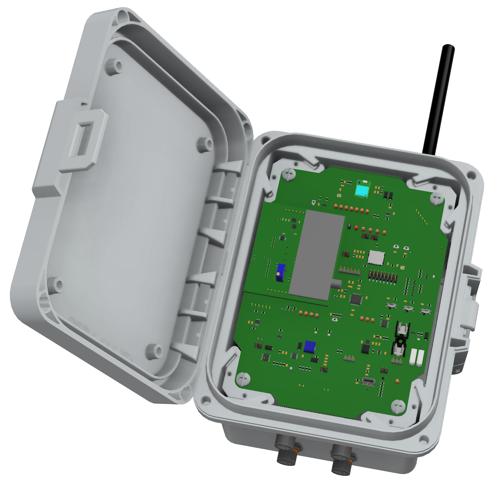Sensor Network for the Preventive Maintenance of Airport Runways
- Degree programme: BSc in Elektrotechnik und Informationstechnologie
- Authors: Patrice Begert, Lukas Roth
- Thesis advisors: Prof. Dr. Andrea Ridolfi, Kevin Dan Reber
- Expert: Ing. civ. dipl. EPF Cédric Vuilleumier
- Industrial partner: armasuisse Bern
- Year: 2024
Runway conditions are crucial for aviation safety, but traditional methods for monitoring deformations are point-in-time, time-consuming and labor-intensive. Our proposed sensor network offers continuous monitoring using multiple sensors and modular hardware and software. Optimized for low power consumption and powered by solar panels, this self-sustaining network withstands extreme conditions, providing reliable data transfer and improving infrastructure maintenance.
Motivation
Monitoring infrastructure, such as roads, bridges and runways, provides crucial information about their condition, ensuring safety and longevity. The current status of asphalt monitoring, particularly for airport runways, relies heavily on traditional methods like strain gauges. These on-site measurement techniques involve manual data collection, which is both time-consuming and labor-intensive. Additionally, using a single sensor lacks the flexibility to cover extensive and complex runway areas effectively. This inflexibility often results in significant limitations, as the system cannot adapt to varying conditions or unexpected changes. Consequently, major events like sudden deformations or cracks may go undetected until they pose severe safety risks. The limitations of current methods prevent important responses to critical issues, potentially leading to costly repairs and maintenance.
Concept
This thesis aims to develop a sensor node that addresses these problems through continuous monitoring. The node utilizes multiple sensors to gather comprehensive information about the pavement's condition. Data from these sensors are transmitted via LoRa to the nearest node or gateway, which then sends the data over LTE to a server. To minimize energy consumption, low power, advanced signal processing and data signalling approaches are employed. The system features modular hardware and software, ensuring flexibility and ease of maintenance. Given the harsh environment in which it operates, all components are designed to withstand extreme conditions. The system achieves self-sustaining autonomy through a battery powered by a solar panel, ensuring continuous operation.
Results
The developed sensor node performed as expected. It efficiently reads, processes, and transmits data using LoRa. Intelligent data processing minimizes energy consumption, ensuring the node's autonomy. Successful data transmission to a server via a gateway confirms further the network's functionality.
Outlook
With the successful prototype of the sensor node, the pavement monitoring project can now advance to the implementation phase on a runway. This next step will provide practical data, demonstrating the system's effectiveness in real-world conditions. The insights gained will enhance pavement monitoring practices, allowing for more accurate assessments and timely maintenance.
